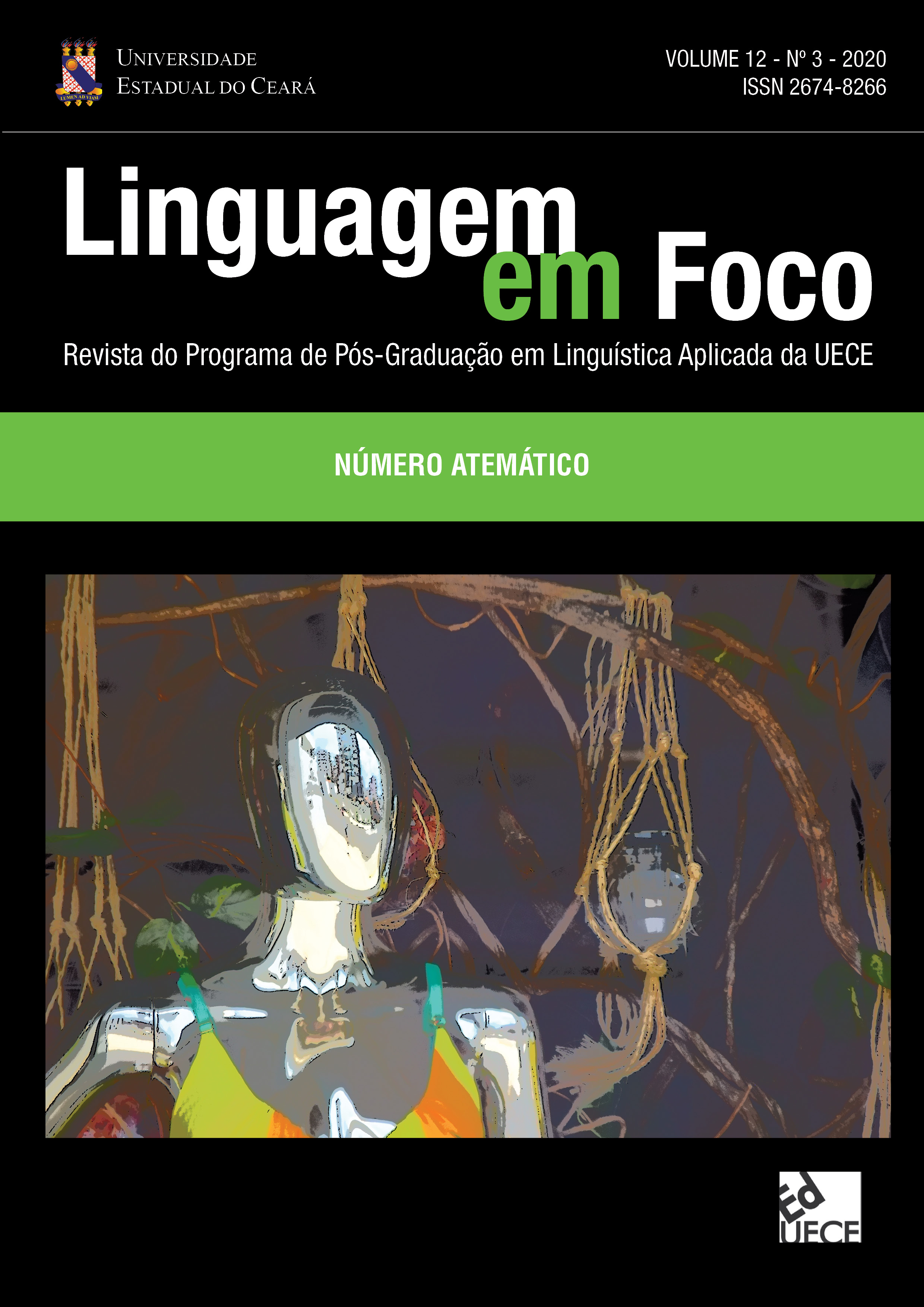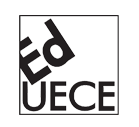The cognition and the theoretical and methodological principles for teaching Brazilian sign language for listeners
Guidelines for beginning teachers
DOI:
https://doi.org/10.46230/2674-8266-12-2630Keywords:
Teaching Libras to Listeners, Cognition, Methodological PrinciplesAbstract
Currently, most works related to the teaching of Libras to listeners are anchored in the social perspective to discuss theoretical and methodological questions. This essay proposes a reflection from the cognitive bias and presents theoretical principles that are based on connectionism (MOTA; ZIMMER, 2005; LEITE, 2008). It also presents methodological principles that support Ellis's (1998) those teachers with little classroom experience. In this model, the methodological issues are anchored in the conception of instruction, which can be based on input, form, production and feedback. The instructions are illustrated with didactic recommendations found in the specialized literature. The arguments point to an integrative view between biological factors and empirical experience and to the indication that formal instruction can optimize them.
Downloads
References
ACKERMAN, J. M.; WOLSEY, J.-L. A.; CLARK, M. D. Locations of L2/Ln Sign Language Pedagogy. Creative Education, v. 9, n. 13, p. 2037-2058, 2018. Disponível em https://www.researchgate.net/publication/328499598_Locations_of_L2Ln_Sign_Language_Pedagogy. Acesso 03 dez 2020.
BRASIL. Lei nº 10.436 de 24 de abril de 2002, que dispõe sobre a Língua Brasileira de Sinais – Libras. Diário Oficial da União. Brasília: MEC, 2002.
CARNEIRO, B. G. OS SURDOS TAMBÉM FALAM?: ASPECTOS SOBRE LÍNGUA DE SINAIS/CULTURA SURDA PARA ESTUDANTES OUVINTES DE LIBRAS COMO SEGUNDA LÍNGUA. Revista São Luis Orione, v. 1, n. 14, 2019. Disponível em http://seer.catolicaorione.edu.br:81/index.php/revistaorione/article/view/126. Acesso 03 dez. 2020.
CORDER, P. The significance of learner's errors. International Review of Applied Linguistics,S, 161-170. THE SIGNIFICANCE OF LEARNER'S ERRORS, 1967. Disponível em http://www.uky.edu/~tmclay/Corder%201967.pdf. Acesso 03 dez. 2020.
ELLIS, R. Principles of instructed language learning. System, v. 33, n. 2, p. 209-224, 2005. Disponível em https://www.sciencedirect.com/science/article/pii/S0346251X05000138. Acesso 03 dez. 2020.
ELLIS, R. Teaching and Research: Options in Grammar Teaching. TESOL Quarterly, v. 32, n. 1, Spring, 1998, p. 39-60. Disponível em https://elanoldenburg.files.wordpress.com/2008/11/ellisteaching.pdf. Acesso 03 dez. 2020.
FELIPE, T. A.; MONTEIRO, M. S. LIBRAS em Contexto, Livro do Professor/instrutor - Curso Básico - Programa Nacional de Apoio à Educação de Surdos. Brasília: MEC – SEE, 2001.
GESSER, A. Metodologia de Ensino em Libras como L2. Florianópolis: UFSC, 2010. Disponível em https://www.libras.ufsc.br/colecaoLetrasLibras/eixoFormacaoPedagogico/metodologiaDeEnsinoEmLibrasComoL2/assets/629/TEXTOBASE_MEN_L2.pdf. Acesso 03 dez 2020
HILGER, A. I. et al. Second language acquisition across modalities: Production variability in adult L2 learners of American Sign Language. Second Language Research, v. 31, n. 3, p. 375-388, 2015.
LEITE, A. de S. O paradigma conexionista na aquisição lexical. ReVEL, v. 6, n. 11, agosto de 2008. Disponível em http://www.revel.inf.br/files/artigos/revel_11_o_paradigma_conexionista_na_aquisicao_lexical.pdf. Acesso 03 dez. 2020.
LEITE, T. de A.; MCCLEARY, L. Estudo em diário: fatores complicadores e facilitadores no processo de aprendizagem da Língua de Sinais Brasileira por um adulto ouvinte. Estudos Surdos IV. Petrópolis: Arara Azul, 2009. p. 242-276.Disponível em https://editora-arara-azul.com.br/site/ebook/detalhes/14. Acesso 03 dez. 2020.
MAYBERRY, R.I. Learning Sign Language as a second Language. In: WOLL, B. (Ed.). Sign Language, Encyclopedia of Language and Linguistics, 2. ed. Oxford: Elsevier, v 6. p. 743-746, 2006. Disponível em https://mayberrylab.ucsd.edu/papers/Mayberry_2ndLangLrng06.pdf
Acesso 03 dez. 2020.
MOTA, M.; ZIMMER, M. C. Cognição e aprendizagem de L2: o que nos diz a pesquisa nos paradigmas simbólico e conexionista. Revista Brasileira de Linguística Aplicada, v. 5, n. 2, p. 155-187, 2005. Disponível em https://www.scielo.br/pdf/rbla/v5n2/08.pdf. Acesso 03 dez. 2020.
PICHLER, D. C.; KOULIDOBROVA, H.. Acquisition of sign language as a second language (L2). In: MARSCHARK, M.; SPENCER, P. E. (Eds.). The Oxford handbook of deaf studies in language. Oxford: Oxford University Press, 2015. p. 218-230. Disponível em https://www.researchgate.net/publication/336284706_Acquisition_of_Sign_Language_as_a_Second_Language. Acesso 03 dez. 2020.
QUADROS, R. M.; PIZZIO, A. L.; REZENDE, P. L. F Língua Brasileira de Sinais II. Florianópolis: Universidade Federal de Santa Catarina, 2009.Disponível em https://www.libras.ufsc.br/colecaoLetrasLibras/eixoFormacaoEspecifica/linguaBrasileiraDeSinaisII/assets/482/Lingua_de_Sinais_II_para_publicacao.pdf. Acesso 03 dez. 2020.
QUINTO-POZOS, D. Teaching American Sign Language to hearing adult learners. Annual Review of Applied Linguistics, v. 31, p. 137-158, 2011. Disponível em: https://pdfs.semanticscholar.org/0e6a/54dc73020fb1d5672077a2c3d1f25b6d17be.pdf. Acesso 03 dez. 2020.
ROCHA, C. H. O ensino de línguas para crianças no contexto educacional brasileiro: breves reflexões e possíveis provisões. DELTA [online], vol.23, n.2, p 273-319, 2007. Disponível em https://www.scielo.br/scielo.php?pid=S010244502007000200005&script=sci_abstract&tlng=pt. Acesso 03 dez. 2020.
ROSEN, R. S. Between-Learners’ Outsideof-Classroom Uses of American Sign Language as a Foreign Language. Sign Language Studies, v. 14, n. 3, p. 360-381, 2014.
SILVA, L. da. Fluência de ouvintes sinalizantes de libras como segunda língua: foco nos elementos da espacialização. Tese (Doutorado em Linguística) – Universidade Federal de Santa Catarina, Centro de Comunicação e Expressão, Programa de Pós Graduação em Linguística, Florianópolis, 2018.
VIDAL, R. T. Ensino-Aprendizagem de Foco na Forma: Retorno ou Recomeço?. The ESPecialist, v. 28, n. 2, 2007. Disponível em https://revistas.pucsp.br/index.php/esp/article/view/6173. Acesso 03 dez 2020
WILCOX, S.; WILCOX, P. P.. Aprender a Ver. Petrópolis: Editora Arara Azul, 2005. p. 44-72. Disponível em https://editora-arara-azul.com.br/site/ebook/detalhes/9. Acesso 03 dez. 2020.
Published
How to Cite
Issue
Section
License
Authors who publish in Linguagem em Foco Scientific Journal agree to the following terms:
- Authors retain the copyright and grant the journal the right of first publication. The articles are simultaneously licensed under the Creative Commons Attribution License which allows sharing the work with an acknowledgement of its authorship and initial publication in this journal.
- The concepts issued in signed articles are the absolute and exclusive responsibility of their authors. Therefore, we request a Statement of Copyright, which must be submitted with the manuscript as a Supplementary Document.
- Authors are authorized to make the version of the text published in Linguagem em Foco Scientific Journal available in institutional repositories or other academic work distribution platforms (ex. ResearchGate, Academia.edu).





























